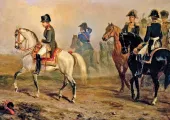Great history of Natural Nation India
On

Prof Kusumlata Kedia
Nobody dared to attack India 4thcentury BC to 11th century. During which, several states and regions continued to get defeated but nobody dared to attack India whose emperors were mighty and chivalric. |
Maurya Empire
According to Indian historical holy scripture, the period of Chandragupta Maurya is 18thcentury BC, while disciple of William Jones believes it 4th century BC. The inscriptions of Chandragupta Maurya and Emperor Ashoka mention about their contemporary kings. The Yavans in the inscription of Ashoka at Jalalabad have been called citizens of emperor Ashoka whose empire was spread from Himalaya to Chennai. But Ashoka has never accepted himself as follower of Buddhism. He declares himself as follower of religion and sadharm. (DR Bhandarkar, Ashoka, Kolkata, 1899).
Gupta Empire
Gupta dynasty emperor is the second largest emperor who ruled from 375 BC to 6thcentury. Later, Chandragupta Vikramaditya and Kumargupta First and Skandgupta of this empire defeated Hun military. The Hun is Indian kshtriya which is mentioned in Ramayana and Mahabharata. They ruled entire Europe and Arabic region and one fourth of the world was under their kingdom. But the mighty kshtriya of India didn’t allow them to enter the country.
Emperor Samudragupta, Chandragupta II and Kumargupta I performed yagya and provided shelter to the Buddhism and Jainism. Great poet Kalidas, great playwright Vishakhadatta, great koshkar Amar Singh, great mathematician Aryabhatta, Varah Mihir and Brahmgupta were in the regime of Emperor Chandragupta Vikramaditya. Patliputra was the capital of the Gupta Emperor. There are proofs of architecture Gupta Emperor at Mehrauli of Delhi and Nalanda of Bihar.
Emperor Kanishka dynasty
The Kanishka Empire was spread from Gandhar to south India and Chinese Turkishtan. Emperor Kanishka was smart who believes in religious scriptures. Therefore, they used to give respect to the Buddhism and organise Buddhist sangiti. The picture of Lord Vishnu, Lord Shiva and Lord Buddha and other deities were inscribed on their coins. Huvishka and Vasudeva were the chivalric kings. They were follower of both the Lord Shiva and Lord Vishnu. (Indian History Kosh, Page 75, Hindi Committee Uttar Pradesh, Sachchidanand Bhattacharya)
Satavahana Empire
It’s the fourth largest empire which started many centuries before the Christ and ruled to the end of fifth century. Satavahana got married with Yavan. (History Of South India: Neelkanth Shashtri from 1 to 4, Mumbai 1962)
Malwa Empire
The great Malwa Empire is the fifth largest empire. Great emperor Kartavirya Arjuna and other emperors ruled for thousands of years. The branch of Malwa was known as Bhoj dynasty. It’s also mentioned in Mahabharata period. Later, Emperor Bhojraj was famous. (History and Culture of Indian People, Part 2, Chapter 11)
Great Emperor Vikramaditya
Vikramaditya was the great emperor whose empire was spread from west India to central India. It was larger than any state of Europe.
Malwa ruled a major part of India and its capital was Ujjaini. Yashodharman was the famous emperor in 6thcentury in Malwa dynasty. He defeated Mihirgul. There are two pillars of Yashodharma at Mandsor of Madhya Pradesh. According to which, after 600 years of great emperor Vikramaditya, he ruled from Brahmaputra to sea and from Himalaya to Mahendra Giri mountain.
Chola Emperor
This emperor ruled from south India to Sri Lanka from the beginning of century to 13th century. Chola emperor Rajendra I was very chivalric. He ruled from Bengal, Bihar, Odisha to Andaman Nicobar. Later, Vijaynagar empire was famous for Hindus. (Yadavas Through Ages, Part 1, Part 2)
Chalukya Empire
Chalukyas were the ancestors of chandravanshi kings of Ayodhya who made their capital at Vatapi. Emperor Pulakeshin I performed Ashwamedh yagya. There are many historical proofs for Chalukya empire. Lord Vishnu and Swami Kartikeya were their kul deity and ishta deity respectively. Twenty one Chalukya emperors were very famous and they ruled till beginning of 13th century. Twenty seven other emperors were in this dynasty.
Pandya, Pallav, Rashtrakut, Cher (Kerala) empire
There were also Pandya dynasty, Cher dynasty, Pallav dynasty and Rashtrakut dynasty. They were the parts of Maharaja Yayati. Chola, Cher, Kerala and Rashtrakut dynasty were in the branch of Turvush in the dynasty of Somvanshi. Shaka, Hun and Yavan were the dynasty of this branch. They ruled China, Mongolia, Yavan province, Russia, France, Germany, Rome and Spain for years.
There was Dradyu in the dynasty of Maharaj Yayati. He set up Gandhar state. Dyud purohit belongs to this dynasty. Dyud and Kelt ruled many states of Europe.
Pandya ruled from 6th century BC to year 1378. Yavan travellers mentioned the state of Pandya and called them as ancestor of Lord Krishna. Turvasu and Yady are siblings.
Ancient Tamil Sangam Literature mentions about state of Pandya. After Megasthenes, yavan travellers Periplas and Talmi described about prosperity of state. Marcopolo too had visited the state twice in 13th century. Later, it was linked with Vijaynagar empire. It existed as Mysore till August 15, 1947.
Cher ruled Kerala. Talmi described about trade relation between Cher and Yavan. Chola dynasty ruled upto 2700 years. The inscription of Emperor Ashoka describes Chola state as free state. There were 25 other chivalric Chola emperors. (The Age of Emperial Unity: Rameshchandra Mazumdar, Chapter 15)
Other state of South India
Tashtrakut dynasty ruled a major part of south India from 736 year to 973 year. There were 14 valour emperors. Krishna I built Kailash Temple of Ellora. Emperor Dhruv defeated Gurjara Pratihara ruler Vatsraj. Fifth emperor Govind III ruled north India. It’s said that Arabic trader Suleman visited India. He had termed Amoghvarsh as one of the four greatest rulers in the world. Eighth ruler Indra III won Kannauj state. Rashtrakut built temple. (Neelkanth Shashtri earlier said)
Great Kalchuri Empire
Kulchuri dynasty was also the great dynasty of India. They ruled around one third of India like Mahakaushal, Vindhya, Mahishmati, Narmada region, Malva, Maharashtra, Gujarat and Karnataka for thousands of years. The last emperor was Vijjhal. There was a great Kulchuri emperor Maharaj Gangeyadeva in 11thcentury. He got title of Vikramaditya.
He had friendly term with Maharaj Bhoj. They ruled Gorakhpur, Bahraich, Kushinagar and south Kaushal or Chhatishgarh. They got weakened in war with Chandel. (The Classical Age, Chapter 13-14, Mazumdar)
Hoysala Empire
They ruled Karnataka from 11thcentury to 14thcentury. They had enmity with Parmar emperor. Malik killed Hoysala emperor Ballal deceitfully. Later, this region became part of Vijaynagar empire. Alauddin lost mental balance and fell sick. After three years, he died. (Neelkanth Shashtri earlier said)
Vijaynagar Empire
Vijaynagar empire was spread under the leadership of Harihar and Bukka. It continued till 20th century. It was very prosperous empire. Great Swami Vidyaranya was the source of inspiration for this empire (Same).
Gang Empire
They ruled a major part of Karnataka and Odisha from 2nd century to 11th century. Gang emperor’s minister Chamund Rai got built 56 ft high mammoth statue of Gomateshwara at Shravanabelagola in 10thcentury. There were 11 courageous emperors in Gang dynasty. Singhan Yadav ruled Odisha, Mysore and Gujarat in 13thcentury. Alauddin Khilji signed treaty with Emperor Ramchandra Dev and offered to pay a certain amount to the latter. He convinced Ramchandra Dev to fight with Kakatiya dynasty emperor Rudradev who later also signed treaty with Alauddin. It was a wise decision. (Same Neelkanth Shashtri).
लेखक
Related Posts
Latest News
01 Dec 2024 18:59:48
योग प्रज्ञा योग - योग जीवन का प्रयोजन, उपयोगिता, उपलब्धि, साधन-साधना-साध्य, सिद्धान्त, कत्र्तव्य, मंतव्य, गंतव्य, लक्ष्य, संकल्प, सिद्धि, कर्म धर्म,...



.jpg)

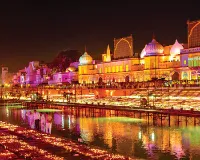
1.jpg)
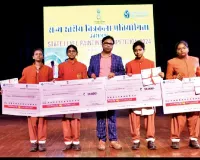
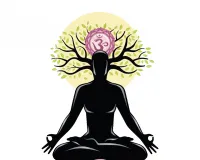

.jpg)

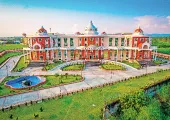

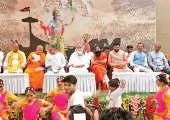

.jpg)

